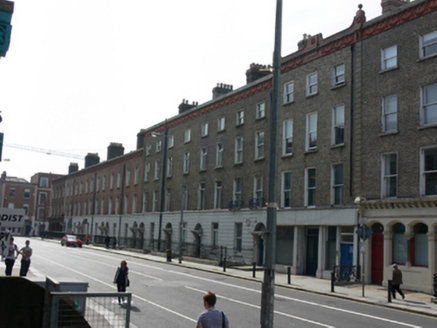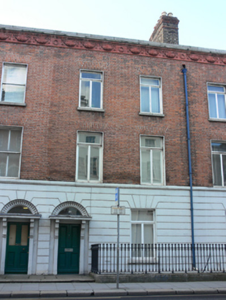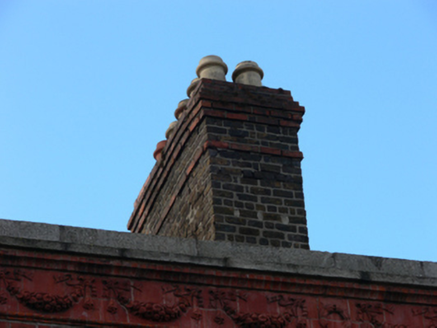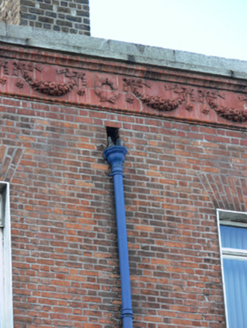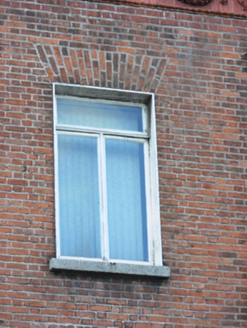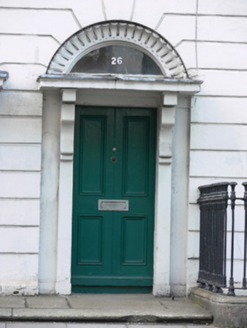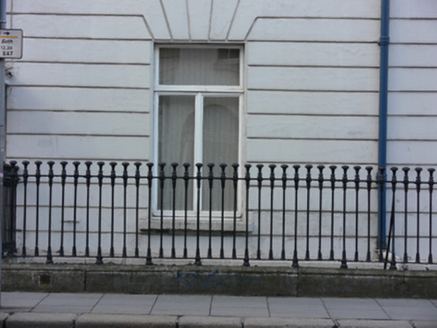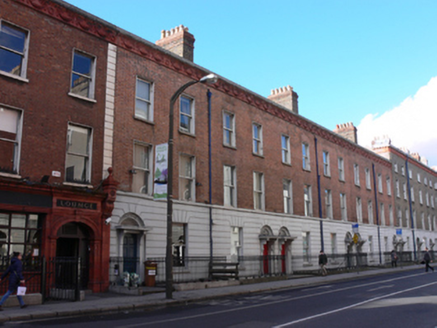Survey Data
Reg No
50020442
Rating
Regional
Categories of Special Interest
Architectural, Artistic, Social
Original Use
House
In Use As
Building misc
Date
1830 - 1850
Coordinates
316569, 233875
Date Recorded
11/03/2015
Date Updated
--/--/--
Description
Terraced two-bay three-storey over basement former house, built c.1840, now in use as part of college. Pitched slate roof concealed behind parapet with ashlar granite coping, granite and moulded brick cornice over terracotta frieze having swag-and-wreath detail, brick chimneystacks with clay pots and cast-iron rainwater goods. Red brick, laid in Flemish bond, to walls, channelled render to ground floor and masonry plinth course over smooth render to basement. Square-headed window openings having recent timber casement windows with raised render reveals and granite sills, continuous moulded sill course to first floor. Segmental-headed door opening having masonry doorcase with stepped console brackets to entablature, acanthus leaf motif to architrave, and timber panelled door having plain fanlight. Nosed granite step, and cast-iron railings on carved granite plinth wall to basement well. Street fronted to Westland Row.
Appraisal
The soft red tones of the bricks and striking rusticated render to the ground floor are repeated in the neighbouring buildings, creating a strong sense of unity on the streetscape. A shared parapet height, fenestration arrangement and detailing add to the cohesiveness evident within this terrace, while the later moulded terracotta frieze, adorned with Classical motifs, adds artistic interest to the composition. Built originally as domestic residences, the houses on this street were soon adapted to include commercial businesses, and this one was occupied in the mid-nineteenth century, by J.A. Byrne, ex-assistant-master to the Rotunda Hospital and professor of midwifery. This area of Dublin saw a marked concentration of health care professionals. Westland Row was opened in 1773, and widened in 1792. It retains a number of late Georgian and early Victorian houses, creating an interesting and varied historic streetscape.
